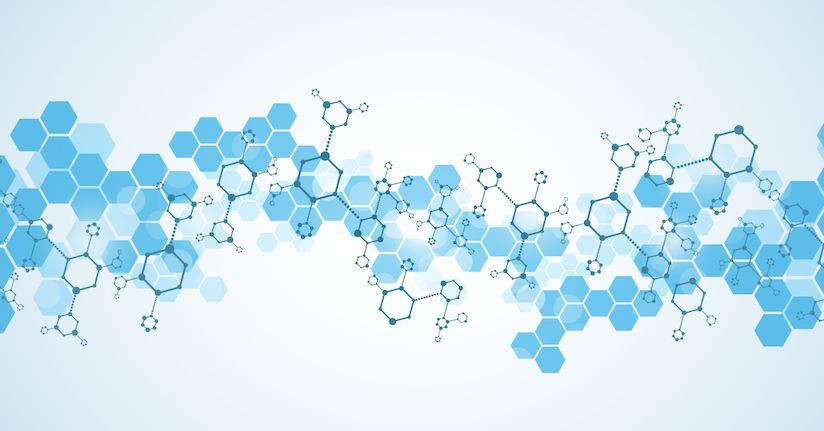AHS 2019: New Research On Light Sensitivity and Headache Disorders
Every year, the best and brightest in the field of headache and migraine medicine convene during the annual scientific meeting of the American Headache Society (AHS). Here, the latest in research is presented to underscore scientific advances in the understanding and treatment of headache disorders. Not surprisingly, at the 2019 meeting in Philadelphia, photophobia and light sensitivity was also a hot topic given its established link to migraine. In this post, we recap some of these key insights that have emerged out of the AHS scientific meeting.
Light sensitivity prominent in post-traumatic headache
In a small pilot study led by prominent headache specialist Dr. Amaal Starling, researchers sought to quantify light-related pain and other symptoms for individuals who had persistent headaches after concussion. After introducing a bright light “stressor,” they found that patients with these post-concussion headaches had a significantly lower pain tolerance than healthy individuals. In addition, they experienced more severe photophobia symptoms, and even their heat-related skin sensitivity (allodynia) was worsened by light exposure. Clearly, this supports the fact that concussions can lead to the kind of sensory dysfunction that characterizes other conditions like migraine.
The role of CGRP in migraine-related photophobia
New treatments for migraine prevention focus on blocking the release of calcitonin gene-related peptide (CGRP), a protein in the brain that can induce migraine attacks. The presence of this protein also leads to photophobic pain and many of the light-avoiding behaviors that patients describe. With this latest study, researchers are zeroing in on which part of the brain activates light sensitivity in the presence of CGRP; they specifically identified the posterior thalamic region as the primary culprit, an area that already has connections to photophobic activity. And why does this matter? Not only does it provide a biological explanation for the effectiveness of anti-CGRP medications in reducing photophobia, but it may pave the way for more targeted treatment efforts going forward.
Photophobia: The most bothersome symptom of migraine
Just how disruptive is chronic light sensitivity for those with a migraine disorder? According to a new survey of over 6,000 patients, it represents the most bothersome symptom (MBS)—ahead of other common issues like nausea and sensitivity to sound. In addition, there was a greater likelihood of photophobia being labeled as the most negative complaint among those who had severe migraine symptoms. This reinforces that persistent sensitivity to light impacts every aspect of a person’s life, from their pain levels to their daily activities.
Photophobia linked to higher pain days for migraine
Clearly, it seems that the presence of certain attack characteristics can lead to greater pain, delayed recovery and other negative outcomes. But what are those factors? According to experts, sensitivity to light may be the single-biggest indicator of a 'high' pain day—ahead of other hallmark migraine features like phonophobia, impaired concentration and neck pain. This makes sense too because of the fact that light sensitivity is a prevailing issue that affects every stage of the migraine attack, not just the symptomatic phase. For many, it is a constant disturbance that indicates the beginnings of an attack, lowers our tolerance for pain and/or outright worsens other symptoms. No wonder it can also signal more migraine pain overall!
The brighter the light, the greater the headache risk
Light sensitivity is not only one of the most common symptoms during a migraine attack, but it is also a regular trigger for many. As such, researchers continue to explore the properties of light that are most likely to bring on migraine attacks and photophobic responses. In this latest analysis of people with episodic migraine, increasing light intensity was directly tied to a 10% higher risk for headache-related episodes. As we have discussed at length and which is further reinforced here, intensifying the brightness of light sources along with already-high concentrations of blue wavelengths may represent the biggest sensory threats for people with a headache disorder.
Flickering light remains a source of discomfort
From fluorescents to flashing lights, the flickering of certain sources can trip all the wrong parts of a migraine brain. A pair of Philadelphia researchers affirmed this in their comparison of patients with migraine with aura versus healthy individuals. They specifically found that the perception of visual discomfort to this type of light and corresponding light sensitivity symptoms were also associated with elevated activity in the visual cortex within the brain. Higher flicker rates may also specifically bring about headache pain for those with migraine with aura, but more investigation is needed. Regardless, we are starting to get a clearer picture of the biological changes that occur when a supercharged brain is exposed to light.
All sources:
61st Annual Scientific Meeting American Headache Society® July 11 ‐14 2019 Pennsylvania Convention Center Philadelphia, PA. Headache: The Journal of Head and Face Pain, 59: 1-208. doi:10.1111/head.13549. Retrieved from https://headachejournal.onlinelibrary.wiley.com/doi/10.1111/head.13549
Abstracts:
Starling AJ, Jarvis N, Schwedt TJ. OR14 Cutaneous Heat Pain and Light-Induced Pain Thresholds in Posttraumatic Headache Attributed to Mild Traumatic Brain Injury.
Sowers LP, Rea B, Wang M, Taugher R, Wemmie J, Kuburas A, Russo A. OR18 and DB05 Central Sites Controlling CGRP-induced Light-aversive Behavior.
Munjal S, Singh P, Bensimon L, Reed ML, Fanning KM, Buse DC, Dodick DW, Schwedt TJ, Lipton RB. P64 Factors Associated with Most Bothersome Non-Headache Migraine Symptom (Nausea, Photophobia and Phonophobia): Results from the Migraine in America Symptoms and Treatment (MAST) Study.
Donoghue S, Vives-Mestres M, Shulman K. P24 Detecting Factors Associated with “low” and “high” Headache Pain Days in Individuals with Chronic Migraine.
Bertisch SM, Li W, Vetter C, Buettner C, Mostofsky E, Rueschman M, Phillips A, Mittleman M. LBOR02 White Light Exposure and Risk of Headache Onset Among Patients with Episodic Migraine.
Patterson Gentile C, Aguirre GK. P279LB The Degree of Discomfort Provoked by Flickering Light is Strongly Related to Visual Cortex Response.
TheraSpecs Glasses for Light Management
Try our light-filtering glasses and stay protected against harsh light from screens, fluorescents, LEDs, unwanted blue light, bright sunlight, flashing lights, and more.





